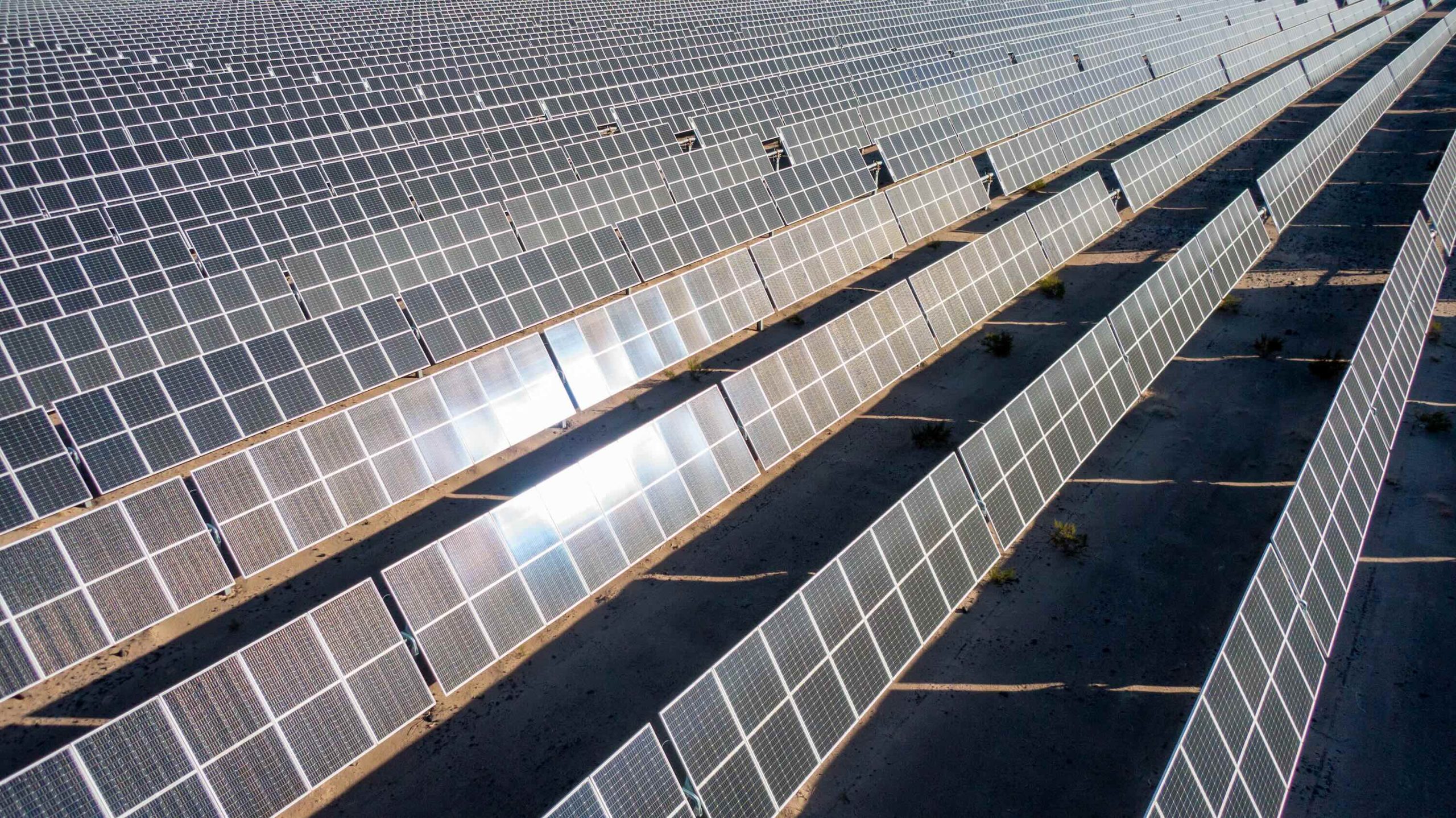
In a significant move highlighting the tech industry’s escalating demand for sustainable power, Meta recently finalized three substantial agreements to procure nearly one gigawatt (GW) of solar energy. This latest procurement spree propels the social media titan’s total solar capacity acquisitions for the year past the three gigawatt mark, underscoring a rapid acceleration in its efforts to fuel ambitious artificial intelligence initiatives. The strategic pivot towards solar reflects a broader industry trend, where the cost-effectiveness and relatively swift deployment timelines of photovoltaic projects make them a preferred solution for rapidly expanding data center infrastructures.
The Unprecedented Energy Demand of AI
The burgeoning field of artificial intelligence, particularly the development and deployment of large language models and advanced machine learning algorithms, has introduced an unprecedented surge in global energy consumption. Training a single sophisticated AI model can require the energy equivalent of several homes for an entire year, while ongoing inference (running AI applications) contributes continuously to electrical loads. Data centers, the physical backbone of these digital operations, are already prodigious consumers of electricity, accounting for an estimated 1-1.5% of global electricity use. With AI capabilities integrating into virtually every digital service, this percentage is projected to rise dramatically in the coming years. Tech giants like Meta are therefore under immense pressure to secure vast, reliable, and increasingly, renewable energy sources to meet these escalating demands, not only for operational stability but also to address growing environmental concerns from investors and the public.
Meta’s Strategic Solar Investments
Meta’s recent acquisitions illustrate a multifaceted approach to renewable energy procurement. The company announced two separate agreements in Louisiana, collectively securing the environmental attributes corresponding to 385 megawatts (MW) of electricity. These projects are anticipated to achieve completion within the next two years. Preceding these Louisiana commitments, Meta also unveiled a larger deal earlier in the week, involving the purchase of 600 MW from a sprawling solar farm situated near Lubbock, Texas. This substantial Texas project is slated to commence commercial operations in 2027.
While the Texas facility will not directly connect to Meta’s data centers, its output will flow into the regional electricity grid, effectively offsetting the consumption of Meta’s facilities within that grid’s operational footprint. This arrangement represents a common strategy in large-scale renewable energy procurement, where the company’s energy demand is matched by renewable generation in the same grid region, even if the electrons don’t physically travel directly from the solar farm to the data center. The Louisiana deals, however, involve a different mechanism: the purchase of environmental attribute certificates (EACs). These certificates enable Meta to claim that its power consumption, even if sourced from carbon-intensive grids, is offset by an equivalent amount of renewable energy generated elsewhere.
The Nuance of Renewable Energy Procurement: PPAs vs. EACs
The distinction between these two types of agreements—direct renewable energy purchases (often via Power Purchase Agreements or PPAs, as implied by the Texas deal) and the acquisition of EACs (as in Louisiana)—is critical in the discourse surrounding corporate sustainability.
A PPA typically involves a long-term contract directly with a renewable energy developer to purchase electricity at a predetermined price. This direct financial commitment often underpins the development of new solar or wind projects, providing the developer with the financial certainty needed to secure funding and begin construction. This is often referred to as "additionality," meaning the corporate purchase directly leads to new renewable energy capacity being added to the grid that might not have existed otherwise.
Environmental Attribute Certificates (EACs), also known as Renewable Energy Certificates (RECs) in the U.S. market, represent the environmental benefits of one megawatt-hour of renewable electricity generated and delivered to the grid. They can be bought and sold separately from the physical electricity itself. The primary criticism leveled against EACs by environmental experts and some advocacy groups is that their purchase doesn’t always guarantee additionality. While they allow companies to claim reduced emissions on paper, critics argue that in mature renewable energy markets, purchasing EACs may not actually stimulate the construction of new renewable capacity. Instead, it might simply reallocate existing renewable claims without truly greening the grid or reducing overall fossil fuel dependence. This concern has intensified as AI-driven energy demand escalates, prompting questions about the genuine impact of certain corporate "100% renewable" claims.
A Historical Perspective on Corporate Green Energy
The journey of corporate renewable energy procurement has evolved significantly over the past two decades. Early corporate sustainability initiatives often focused on energy efficiency and small-scale on-site generation. As awareness of climate change grew and renewable energy technologies matured, many companies, particularly in the tech sector, began setting ambitious goals, often aiming for "100% renewable energy."
The introduction of EACs years ago played a crucial role in this evolution. At a time when renewable energy was considerably more expensive than fossil fuel-generated power, EACs offered a flexible mechanism. They allowed companies to continue purchasing electricity from existing grid sources while simultaneously investing in renewable energy projects by buying these certificates. This helped developers finance new projects by providing an additional revenue stream, thereby stimulating the growth of the nascent renewable energy sector. The higher cost of renewable power was partially offset by the value of these certificates, which companies could use to meet their environmental targets.
However, the energy landscape has dramatically transformed since then. Over the last decade, the cost of generating electricity from new solar and wind farms has plummeted, in many regions becoming cheaper than building new fossil fuel plants, and even undercutting the operational costs of some existing coal and natural gas facilities. This economic shift has altered the role and perceived efficacy of EACs. While still a valid tool for tracking renewable energy generation, their ability to incentivize new renewable development in already cost-competitive markets is increasingly questioned. Experts contend that for companies to genuinely offset the massive new energy consumption driven by AI, they should prioritize direct investments that lead to the construction of additional, new renewable energy capacity.
Broader Market and Societal Implications
The scale of Meta’s and other tech companies’ energy demands has profound implications beyond corporate balance sheets and sustainability reports. On a market level, these massive procurements act as powerful signals, driving investment into renewable energy infrastructure and accelerating the decarbonization of electricity grids. However, they also place significant strain on existing grid infrastructure, necessitating upgrades and smarter grid management systems to handle intermittent renewable sources and concentrated loads from data centers.
Socially and culturally, the narrative around tech and energy is complex. While companies champion their renewable energy commitments, public scrutiny over the environmental footprint of digital technologies, especially AI, is intensifying. Concerns range from the vast amounts of water used for cooling data centers to the ethical implications of resource extraction for new infrastructure. Transparent and verifiable green energy strategies are becoming paramount for maintaining public trust and demonstrating genuine corporate responsibility. The debate over EACs highlights a broader public desire for authentic decarbonization efforts rather than simply accounting-based offsets.
Looking Ahead: The Path to True Decarbonization
As AI continues its rapid advancement, the energy demands of the tech sector are only expected to grow. This necessitates not just more renewable energy, but also more sophisticated approaches to energy management. Companies are increasingly exploring solutions beyond traditional solar and wind, including geothermal energy, advanced nuclear power, and long-duration energy storage technologies that can provide 24/7 carbon-free power. Furthermore, there’s a growing emphasis on "temporal matching," ensuring that renewable energy is generated and consumed at the same time, rather than relying solely on annual accounting of offsets.
Meta’s recent gigawatt-scale solar acquisitions represent a significant step in its journey towards sustainability and powering its AI ambitions. However, the discussions surrounding the differing impacts of various procurement methods—from direct PPAs that foster new infrastructure to EACs that offset existing consumption—underscore the intricate challenges inherent in genuinely decarbonizing the digital economy. The industry’s future success in achieving truly sustainable growth will depend not only on the sheer volume of renewable energy purchased but also on the strategic choices made in how that energy is brought online and integrated into the global energy landscape.





